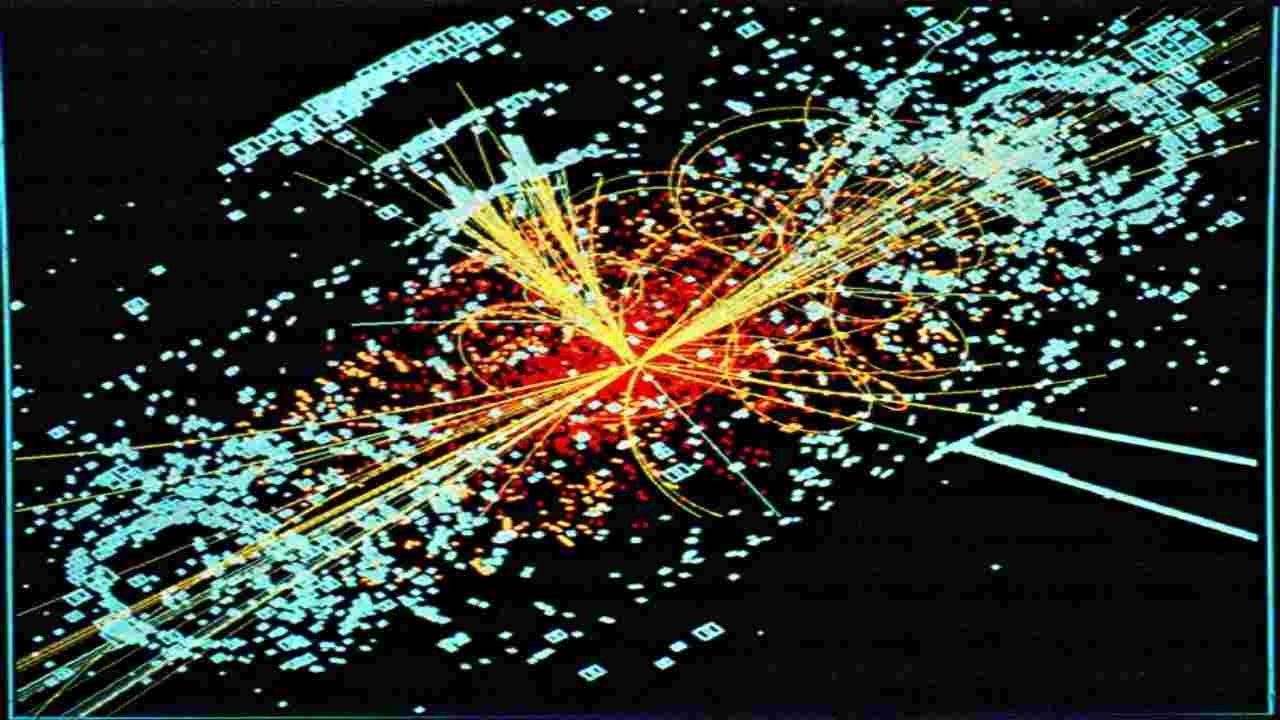Astronomers have achieved a significant milestone in space exploration by identifying, for the first time, a planet-forming disk around a young star in a galaxy outside our Milky Way.
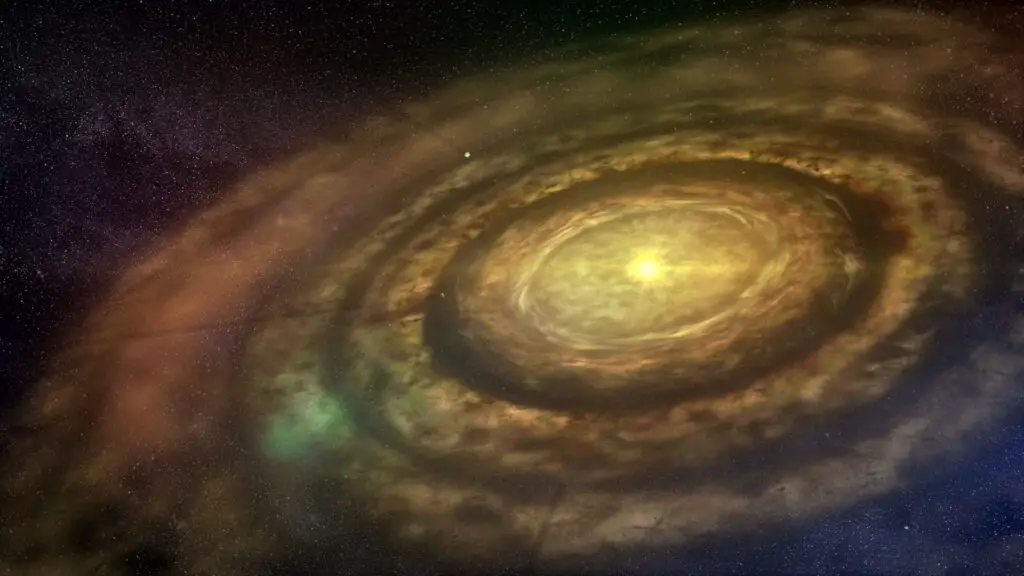
This remarkable discovery, made in the Large Magellanic Cloud, a neighboring galaxy located 160,000 light-years away, sheds new light on the universal processes of star and planet formation, akin to those in our own galaxy.
The system, known as HH 1177, is nestled within a vast gas cloud in the Large Magellanic Cloud. The Atacama Large Millimeter/submillimeter Array (ALMA), the largest astronomical project on Earth comprising 66 antennas in Northern Chile, played a crucial role in this discovery. ALMA’s capabilities as a single radio telescope allowed for this unprecedented observation of celestial phenomena.
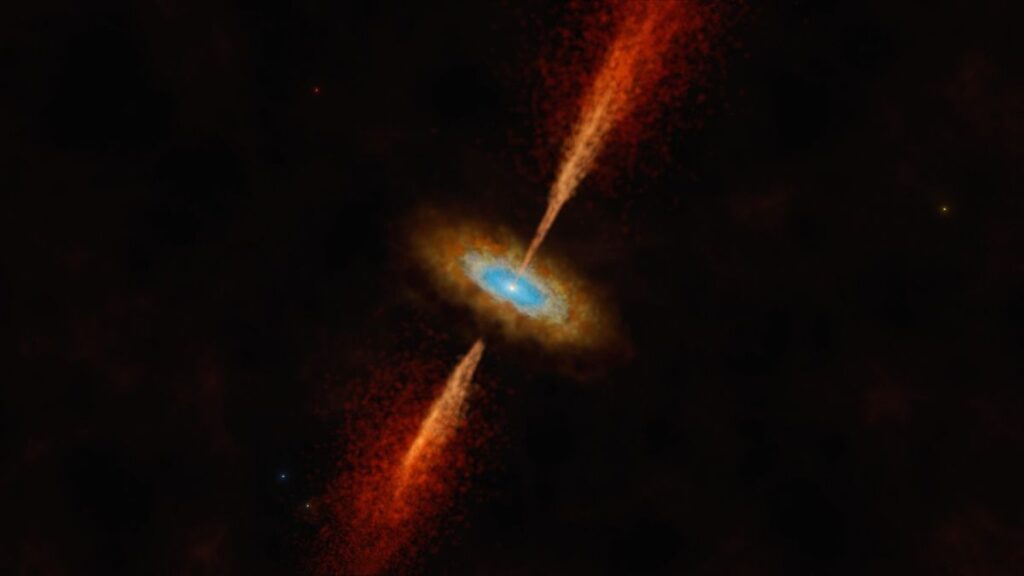
Durham University’s researcher and lead author, Anna McLeod, expressed her excitement upon discovering evidence of a rotating structure in the ALMA data, signifying the detection of the first extragalactic accretion disk. This finding is crucial as it provides direct evidence of the processes essential for forming stars and planets in another galaxy.
The existence of this system was initially suggested by observations from the Multi Unit Spectroscopic Explorer (MUSE) on the European Southern Observatory’s Very Large Telescope (VLT). MUSE detected a jet emerging from a forming star, indicative of ongoing disk accretion. To confirm the presence of an accretion disk in HH 1177, the scientists analyzed the movement of dense gas around the star.
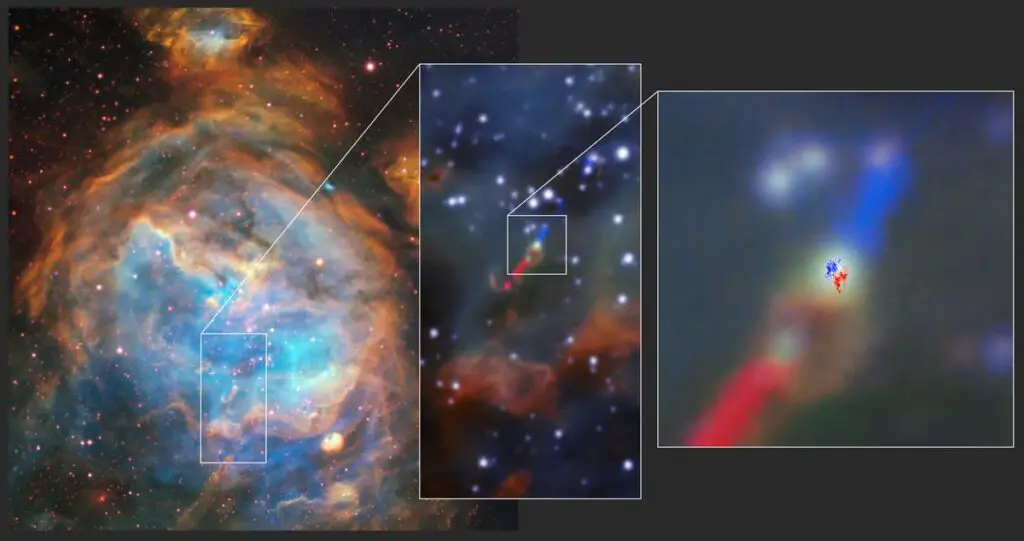
Accretion disks are formed when matter falls towards a central object, such as a young star, black hole, or neutron star, carrying angular momentum. This momentum prevents the matter from directly reaching the central body, leading to the formation of a flattened spinning disk. The variation in the velocity of gas within the disk, faster near the central object and slower at the outskirts, is a hallmark of an accretion disk.
The Large Magellanic Cloud’s relatively dust-poor environment aided the discovery of the accretion disk around HH 1177, allowing astronomers to observe the central star and potentially witness the early stages of planet formation. This process is similar to what our solar system would have experienced around 4.5 billion years ago when a protoplanetary disk surrounded the young sun.
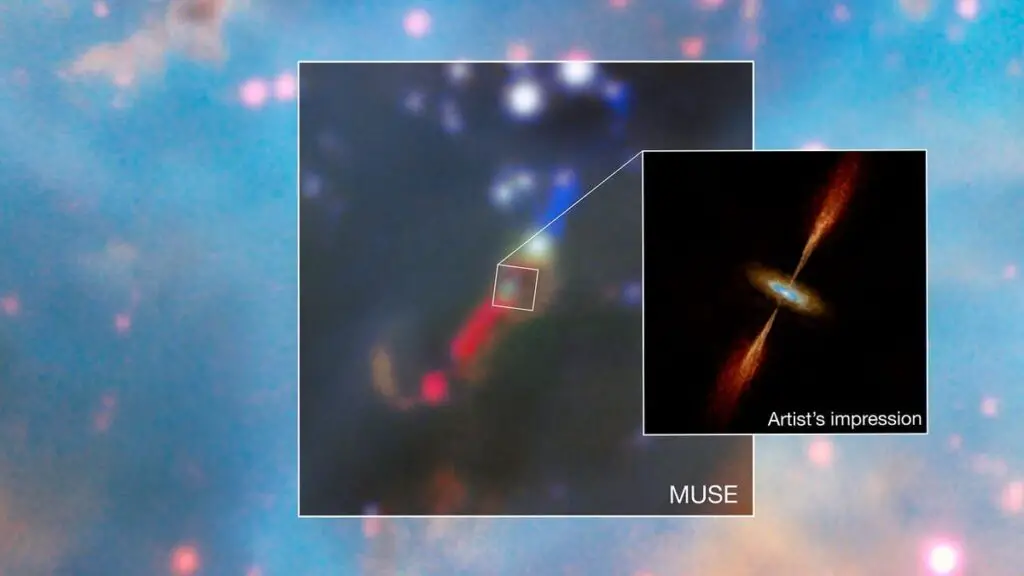
The discovery of this planet-forming disk in the Large Magellanic Cloud marks a new chapter in astronomy, enabling the study of star formation in different galactic contexts. It opens avenues for exploring how planetary systems form and evolve in various galactic environments.
Presented in a paper published in the journal Nature, this research signifies a leap in our understanding of the cosmos. It highlights the technological advancements in astronomical facilities and underscores the importance of studying star formation beyond the Milky Way. This finding not only enriches our knowledge of planetary system formation but also emphasizes the universality of such processes across different galaxies.
As we delve deeper into the cosmos, discoveries like this one emphasize the vast and intricate nature of the universe, revealing processes and phenomena that are consistent across galaxies. The HH 1177 system in the Large Magellanic Cloud stands as a testament to our ever-growing understanding of the origins and evolution of planetary systems in the universe.
Reference(s): Research Paper





